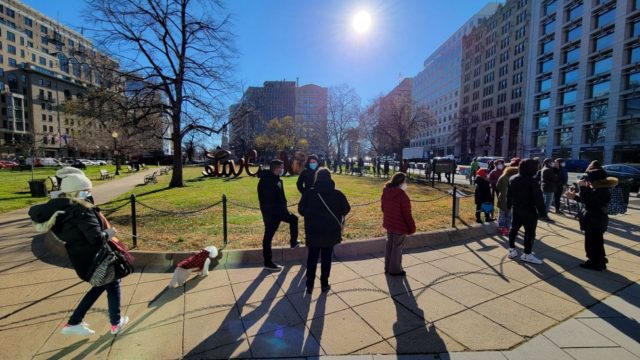Dec. 21 (UPI) — The U.S. population grew by 0.1% in 2021, the slowest rate in the country’s history, according to Census Bureau data released Tuesday.
In terms of real numbers, the population grew by 392,665 from July 2020 to July 2021. This was the first time since 1937 that the U.S. population grew by fewer than 1 million people. It was also the lowest numeric growth since 1900, the first year the Census Bureau began annual population estimates.
The federal agency said the effects of the COVID-19 pandemic exacerbated the already slowing growth the United States has experienced in recent years.
The last time U.S. population growth was so small occurred in 1918 and 1919 during the H1N1 influenza pandemic.
The bureau said decreased net international migration, decreased fertility and increased mortality due to the pandemic all contributed to the slowdown.
Pedestrians walk in Times Square in New York City on October 12. New York was the state that saw the greatest population decline between July 2020 and July 2021, according to Census figures. File Photo by John Angelillo/UPI
“Population growth has been slowing for years because of lower birth rates and decreasing net international migration, all while mortality rates are rising due to the aging of the nation’s population,” Kristie Wilder, a demographer in the Population Division at the Census Bureau, said in a statement.
“Now, with the impact of the COVID-19 pandemic, this combination has resulted in a historically slow pace of growth.”
Idaho, by far, had the largest growth of all U.S. states at 2.9%. Rounding out the Top 10 were Utah and Montana (1.7%), Arizona (1.4%), South Carolina (1.2%), Delaware (1.2%), Texas (1.1%), Florida (1%), Nevada (1%) and South Dakota (0.9%).
Washington, D.C., had the largest population decline at 2.9%, followed by New York (1.6%), Illinois (0.9%), Hawaii (0.7%), California (0.7%), Louisiana (0.6%), Massachusetts (0.5%), North Dakota (0.5%), West Virginia (0.4%) and Mississippi (0.2%).

COMMENTS
Please let us know if you're having issues with commenting.